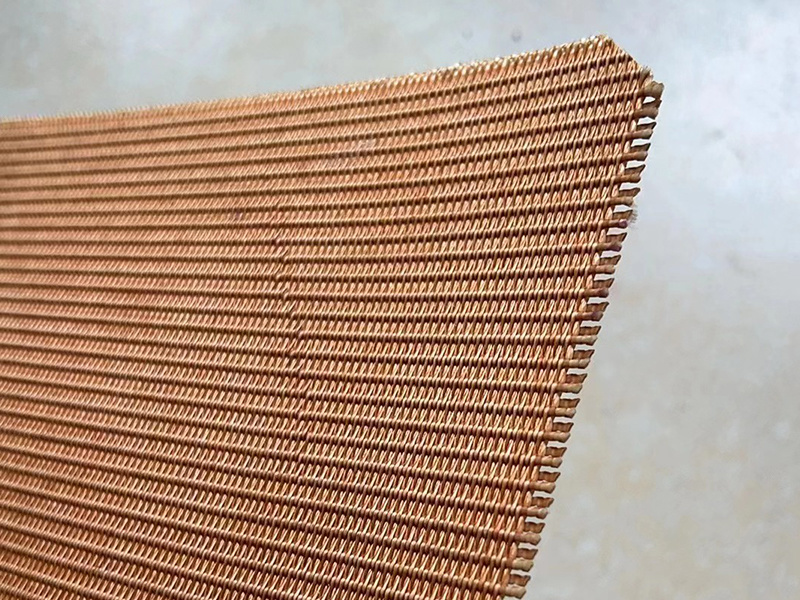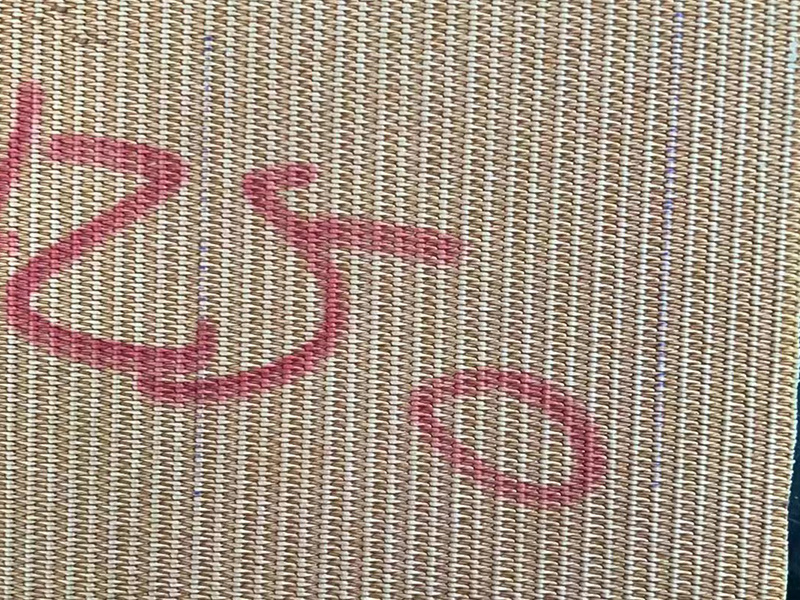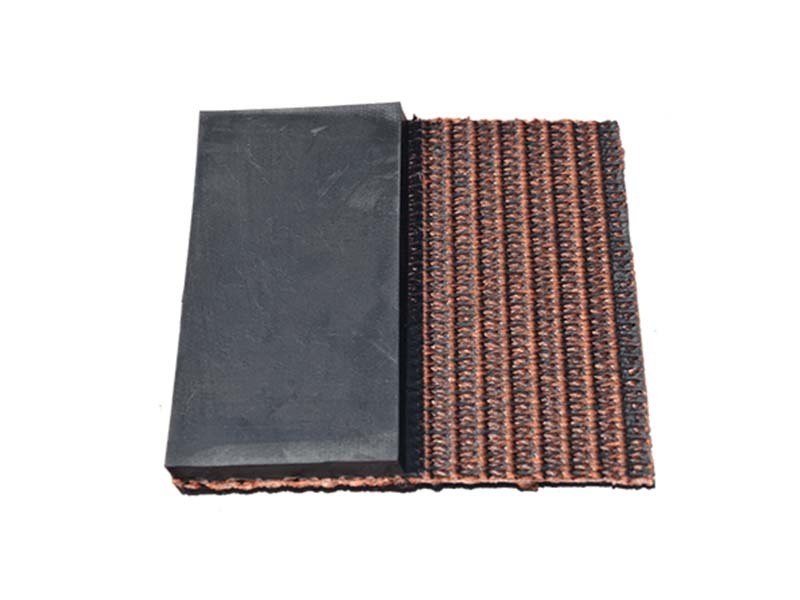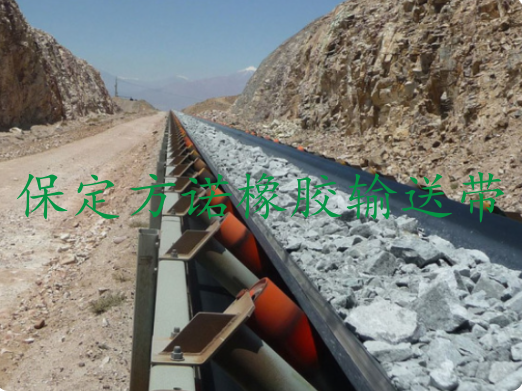Products
Contact Information
Address: China (Boye) conveyor belt Industrial zone
Telephone:+86 18395653111
Mailbox:colin@bestbelting.com
SW Conveyor Belt
Keyword:
SW Conveyor Belt
1. uses
It is suitable for conveying materials with large drop, high load and high speed, and is widely used in mining, port, electric power and other industries.
2. features
Thin belt core: replace the multi-layer structure with single layer or double layer, reduce the total thickness by 7% ~ 17%, have good resistance to bending, can still run smoothly under smaller roller diameter, and can be rolled up to 400~500 meters in length.
High strength: with high Denny fiber special weave, improve the tensile strength of the cloth layer, conveyor belt using small elongation.
Good toughness: STRAIGHT WARP special structure than the general EP / NN conveyor belt can absorb the impact force, improve the service life of the conveyor belt.
3. standard structure

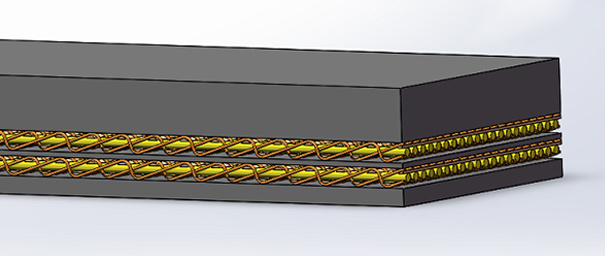
4. product specifications
| Model | Number of layers | Strength N/mm |
| SW500 | 1 or 2 | ≥ 1000 |
| SW630 | 1 or 2 | ≥ 1250 |
| SW800 | 1 or 2 | ≥ 1600 |
| SW1000 | 1 | ≥ 2000 |
| SW1250 | 1 | ≥ 2500 |
| SW1400 | 1 | ≥ 2800 |
| SW1600 | 1 | ≥ 3200 |
5. covering adhesive performance
According to ISO14890-2013 standard requirements:
| Type | Tensile strength (ISO37) Mpa |
Elongation at break (ISO37) % |
Abrasion (ISO4649) mm3 |
| H | 24 | 450 | 120 |
| D | 18 | 400 | 100 |
| L | 15 | 350 | 200 |
The standard values in the above table help to select the appropriate covering glue in the actual application process, and the reliable evaluation of the wear resistance and cutting resistance of the covering glue cannot be determined by the tensile strength, elongation and abrasion alone.
| German Standard DIN-22102 | ||||||
| Grade | Tensile strength ≥ Ma | Elongation at break ≥ M% | Abrasion ≥ mm3 | Adhesion strength between layers of cloth (N/mm) | Adhesion strength between cover layer and cloth layer (/mm) | |
| Covering layer thickness 0.8~1.5mm | Cover layer thickness> 1.5mm | |||||
| W | 18 | 400 | 90 | ≥ 5 | 3.5 | 4.5 |
| X | 25 | 450 | 120 | |||
| Y | 20 | 400 | 150 | |||
| Z | 15 | 350 | 250 | |||
| English Standard BS 490 | ||||||
| Grade | Tensile strength ≥ Ma | Elongation at break ≥ M% | Abrasion ≥ mm3 | Adhesion strength between layers of cloth (N/mm) | Adhesion strength between cover layer and cloth layer (/mm) | |
| Covering layer thickness 0.8~1.5mm | Cover layer thickness> 1.5mm | |||||
| M | 24 | 450 | - | ≥5.25 | 3.15 | 4.5 |
| N | 17 | 400 | - | |||
| Australian Standard AS 1332-2000 | ||||||
| Grade | Tensile strength ≥ Ma | Elongation at break ≥ M% | Abrasion ≥ mm3 | Adhesion strength between layers of cloth (N/mm) | Adhesion strength between cover layer and cloth layer (/mm) | |
| Covering layer thickness 0.8~1.5mm | Cover layer thickness> 1.5mm | |||||
| A | 17 | 400 | 70 | 6 | 4 | 4.8 |
| E | 14 | 300 | - | |||
| F | 14 | 300 | - | |||
| M | 24 | 450 | 125 | |||
| N | 17 | 400 | 200 | |||
| S | 14 | 300 | 250 | |||
| S* | 12 | 300 | 250 | |||
| South Africa SANS 1173:2005 | ||||||
| Grade | Tensile strength ≥ Ma | Elongation at break ≥ M% | Abrasion ≥ mm3 | Adhesion strength between layers of cloth (N/mm) | ||
| Adhesive strength between cover layer and cloth layer (N/mm) | ||||||
| A | 18 | 400 | 90 | ≥ 7 | ≥ 5 | |
| X | 25 | 450 | 120 | |||
| M | 24 | 450 | 150 | |||
| N | 20 | 400 | 250 | |||
Specification and Technical Parameters of Nylon Multilayer Fabric Core Conveyor Belt
| Fabric Type | Fabric construction | Fabric type | Thickness of adhesive tape (mm/p) | Strength series (N/mm) | Cover glue thickness | Width range (mm) | ||||||
| By | Weft | Layer 2 | Layer 3 | 4 floors | 5 floors | 6 layers | Upper covering layer | Lower cover | ||||
| Nylon | cotton nylon | cotton nylon | Nn-100 | 1.00 | 200 | 300 | 400 | 500 | 600 | 0-12 | 0-10 | 300-2500 |
| Nn-125 | 1.05 | 250 | 375 | 500 | 625 | 750 | ||||||
| Nn-150 | 1.10 | 300 | 450 | 600 | 750 | 900 | ||||||
| Nn-200 | 1.20 | 400 | 600 | 800 | 1000 | 1200 | ||||||
| Nn-250 | 1.40 | 500 | 750 | 1000 | 1250 | 1500 | ||||||
| Nn-300 | 1.60 | 600 | 900 | 1200 | 1500 | 1800 | ||||||
Adhesive strength, elongation performance in accordance with the following table
| Adhesion strength, elongation performance | |||||
| Core material | bond strength | Extension performance | |||
| Interlayer N/mm | Covering layer and layer N/mm | Full thickness longitudinal elongation at break | Full thickness longitudinal reference force elongation | ||
| Covering layer thickness ≤ 1.5mm | Covering layer thickness ≥ 1.5mm | ||||
| Polyester Canvas | ≥ 5 | ≥ 4.5 | ≥ 5 | ≥ 10% | ≤ 4% 6 |
The covering performance of the tape is in accordance with the following table
| Covering performance of tape | |||||
| Overlay Level | Tensile strength | Elongation at break | Abrasion | Change rate of tensile strength and elongation at break after aging | |
| Mpa | Kgf/cm2 | % | mm3 | % | |
| H | ≥ 24 | ≥ 240 | ≥ 450 | ≤ 120 | -25~ 25 |
| D | ≥ 18 | 180 | ≥ 400 | ≤100 | -25~ 25 |
| L | ≥ 15 | 150 | ≥ 350 | ≤200 | -25~ 25 |
SW Conveyor Belt is usually made of high-quality materials, with good strength and durability, able to withstand large tension and weight, and remain stable and reliable during long-term use.
Its design is very delicate, with a flat and smooth surface, which can ensure the stability and smoothness of conveying items, effectively reducing the wear and damage of items. At the same time, SW Conveyor Belt has good flexibility and can adapt to different angles and complex conveying paths.
It plays an important role in many fields, such as in the logistics industry, efficiently transporting various goods; in the manufacturing industry, it helps the smooth progress of the production process. SW Conveyor Belt also has certain corrosion resistance and wear resistance, which can adapt to different working environments.






FAQ
Characteristics of Polyester Conveyor Belt
High modulus, low elongation, good heat stability, impact resistance and other characteristics, suitable for medium and long distance, high-speed, high-speed conditions of conveying materials.
Body material for heat-resistant conveyor belts
The subject material of the heat-resistant conveyor belt includes a skeleton material, a covering layer and a base material.
Selection of the diameter of the conveying roller
The selection of roller diameter should consider the following factors: the average specific pressure between the conveyor belt and the roller surface, the amount of deformation of the bag and the bag, the utilization rate of the allowable strength of the conveyor belt, the frequency of bending of the conveyor belt, the installation location of the conveyor and the conditions of use.
Main material of nylon conveyor belt
The main material of the nylon conveyor belt is nylon, but it does not have enough tension, so it is necessary to add a layer of industrial polyester cloth between nylon and nylon to increase the tension when making the finished product.
The advantages of the pattern conveyor belt
The pattern conveyor belt can ensure the smooth transportation of materials, with anti-skid, impact resistance, and high temperature resistance.
Related Products
Product inquiry
To: Baoding Fangnuo Rubber Products Manufacturing Co., Ltd.





